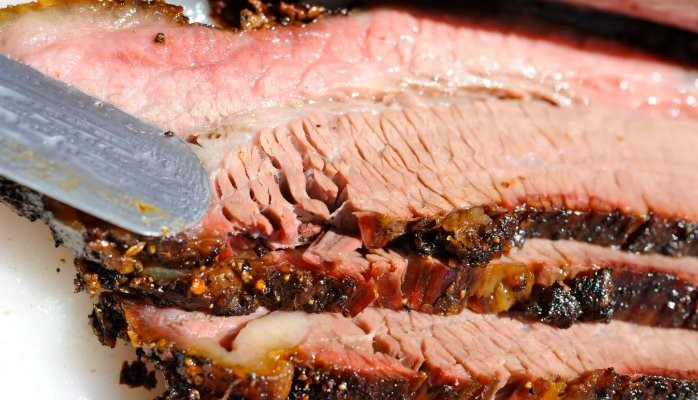
4 Myths Uncovered About Smoking Brisket
A perfectly smoked beef brisket is considered the “holy grail” of barbecue. If you can manage to nail it, you could graduate into the upper echelon of whatever level of pitmaster you’re aspiring to be. But, it’s not easy.
And, like many pursuits that combine bits of skill and art with a wholly subjective outcome, there are plenty of self-proclaimed experts out there who claim to know “the secret” to perfect brisket.
No doubt, many of them know what they’re talking about. The world of BBQ is filled with passionate people who work hard to get it right. But, along the way, some information may make it into the collective carnivorous consciousness that may be off base. In fact, you could call these myths.
So, we’re hitting this list of brisket myths in full debunking mode.
Myth #1: Grilling and BBQ are the same thing.
This is more of a general misnomer that upsets pitmasters to no end.
Here’s the rule of thumb: if you are preparing food that involves meat being cooked over fire quickly, you’re grilling your meat. On the other hand, barbecue is referred to meat that’s cooked at lower heat for a longer period of time.
Myth #2: Smoking a brisket with the fat cap on top guarantees a moister, more flavorful meat.
Now, let’s get into the nitty gritty of brisket. There’s all manner of controversy in BBQ circles about whether the brisket should be cooked with the fat side up or down, or if it needs to be flipped a certain number of times. One idea is that you must cook the brisket fat side up so that, as the fat renders down and soaks into the meat, providing additional moisture and flavor.
However, meat doesn’t “soak in” rendered fat. The fat essentially melts and flows off the meat as it renders down. How moist and flavorful your brisket is depends to a large extent on the quality of the meat itself, how it is trimmed, the amount of time it spends in the smoker, how it’s wrapped, and how it’s seasoned.
Get our free download, The Bare Bones of BBQ.
Myth #3: The smoke ring is the one and only sign of a perfect brisket.
First, if you’re interested in the ultra-specific details of the smoke ring, read this article at AmazingRibs.com about the science behind the smoke ring.
To sum it up: the smoke ring doesn’t even require smoke. It’s the result of a chemical interaction between myoglobin in the meat and nitric oxide - a compound created when wood or charcoal burns, but that also can be artificially added using salts or injectable chemicals.
While a pink smoke ring will often form on brisket that’s been properly basted and smoked, it’s not a guarantee of a perfect brisket, nor is its lack a sign of meat you should avoid. It’s important not to judge one cut against another based solely on the color or thickness of the smoke ring.
Myth #4: Low and slow is the only way to go.
Low and slow, smoking a brisket at around 225 degrees for 8-12 hours, is the traditional method many people support. However, as the craft of BBQ has gained popularity, new pitmasters have successfully experimented with a quicker method, around 350 degrees for 6 hours.
The low and slow method of barbecue was originally used as a clever way to make tough and stringy meat delicious. Today, beef brisket is usually higher quality and simply doesn’t need all that time at a lower temperature to come out well. Combining higher quality meats with more efficient and consistent smokers and better-informed pitmasters has the quicker method gaining ground.
While there are plenty of other brisket myths out there in need of debunking, these should give you some food for thought. Find out what 4 barbecue experts have to say about smoking brisket in pink butcher paper in our free guide.
UPS recently retired August 31st, 2018
7ySince when did u become a pit master! You'll still a car_ _ _ _ _ _ to me:)